I met a man in Paris who was perplexed when I told him that I would be spending a month in Rome. A world traveler himself, the man has a job that allows him to travel freely several months out of the year, and much of the travel stories he shared with me seemed to be quick and spontaneous, a sort of leap-frogging around the globe.
“I was in Rome a while back,” he said to me over pints at the Canadian pub. “I did everything important in two days.”
I tried to explain to him that I don’t do do, that when I travel, while I usually visit some of the major sights, I like to explore a place on foot, get lost. Wander. In a big city like Rome (heck, even in small towns) it takes more than two days to accomplish that.
But the man couldn’t be convinced.

Rome has been an odd experience for me. I’ve been here for three weeks, and it’s only been in the last few days that I feel like I’ve gotten into the rhythm of being here. I’ve needed to spend a fair amount of time making plans for my spring and summer travels; I’ve been shopping for hiking gear and getting my final round of vaccinations (this week’s activities involve international shipping — more on all that later). This alone has been a strange way to get to know a place and has taken me to some neighborhoods far from the center, far off the beaten path.
But beyond that, Rome is simply a massive city, loud and dirty and crowded with tourists, and the first couple of weeks I was here, I was dependent on Google Maps, unable to just let go and roam. Everything looked the same, I often couldn’t find the street names, and I found myself constantly on the wrong road, even though I had carefully mapped out my route.
Of course, for a full week, my niece was visiting, and I’m thrilled that we got to see so many of Rome’s offerings — ruins and museums and monuments. I wouldn’t have seen half of what the two of us saw if it had just been me. But after seven days of Go, Go, Go (and much quality bonding), I was exhausted and felt like climbing into a hole for a big nap.
I’ve discovered, though, that one of the good things about being so direction oriented for my first few days here is that now I’m starting to connect the dots. I’ll be walking down a street, stumble upon some ruins (because that happens a lot in Rome) and say to myself, “Oh, wow. This is right next to Campo de’ Fiori where Megan and I had lunch, which is next to that one street I always walk down to get home, which is right next to that fountain in Piazza Navona where we saw the pigeon taking a bath.” I’ve collected memories to associate myself with a specific location, and that’s allowed me to immerse myself in flânerie.
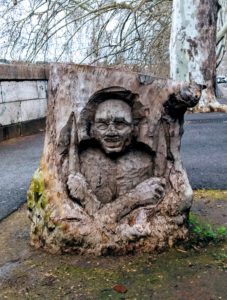
My landlord here in Rome shared a great book with me, 111 Places In Rome That You Must Not Miss, which is, as the title implies, a collection of some off-the-beaten-path places to visit in Rome. I decided to use this book as a springboard into wandering. Each day I’ve chosen a handful of places to visit, created a little map for myself, and headed out. Some of the places have offered a respite from the chaos of this city (I recommend the Botanical Gardens, should you find yourself in Rome someday) while others have been closed or impossible to find. Still, what my walks have helped me do is start to see how everything in Rome connects together. By the third day, I had put my directions down and felt comfortable just roaming.
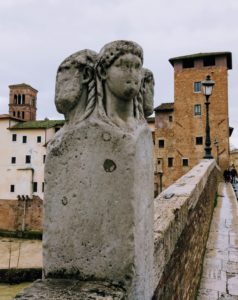
A few years ago when I was briefly living in Paris, the Louvre was closed due to a strike. This shouldn’t come as a shock to anyone — there’s always a strike in Paris — but this happened to be the day I had planned on visiting the Louvre. Being a pro-union gal, I simply shrugged and decided to go sit in a café, when I ran into a mother and daughter from the States.
The two were frustrated that the Louvre was closed, but when I suggested that they go somewhere else, the mother said, “No, we’re just going back to the hotel.”
I said, “The Musée d’Orsay is literally a ten-minute walk from here, and I think in a lot of ways it’s a more enjoyable museum.”
But the mother insisted, “We’re leaving tomorrow anyway, and my daughter really wanted to do the Louvre.
I understood their disappointment, understood the fact that it was easy for me to brush off a strike when I had several weeks remaining in Paris. But they were in Paris — Paris! — probably only for a few days, and there were hundreds of fantastic places they could go. Did it really matter that they didn’t “do” the Louvre?

I’ve never understood the idea of “doing” a place. What does that even mean? I understand that right now I have the luxury of time, that if I feel like going to a movie or lounging around my apartment on a rainy afternoon (or in my case, a rainy four afternoons) I can. I understand that I can spread out sightseeing over several weeks and that it doesn’t matter if a place is closed or if I change my mind on a particular day; I can always come back tomorrow.
But even when I only have a few days in a place, I can’t wrap my brain around the concept of “doing” a place, can’t reduce a place to a list of sights that I can check off one-by-one. I haven’t done Rome because I’ve been to the Colloseum and the Pantheon and tossed a coin into the Trevi Fountain. I enjoyed doing these things, but doing these things in a handful of days doesn’t mean I can cross Rome off my bucket list. There is always more to see, more to do.
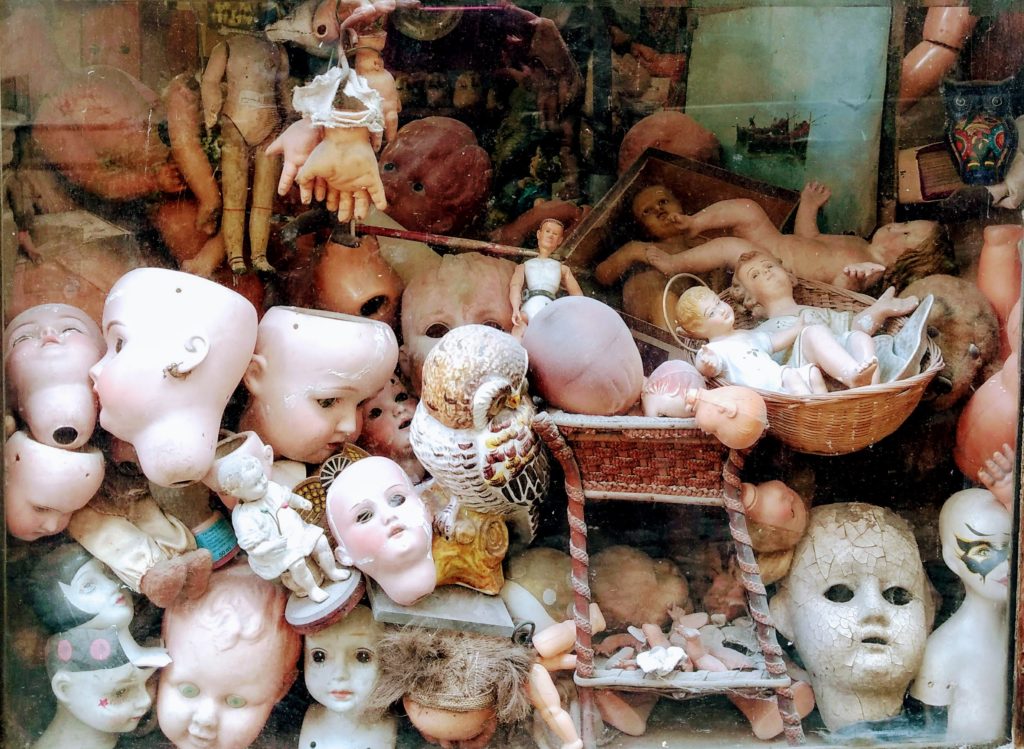
With 111 Places In Rome That You Must Not Miss stowed in my bag, I’ve started gathering the moments that have made me feel most immersed in Rome. Like the time I followed a nun carrying a hot-pink umbrella in a Sunday morning rain. I lost her over by the Castel Sant’Angelo when I got distracted by some pigeons. Then there’s the time I went slogging through the mud behind some sheep in Appia Antica because I didn’t want to walk on paved roads. Or the afternoon I went strolling with Megan along the quiet path alongside the Tiber, just talking about nothing and everything, with neither destination nor intention in mind. The time she had her first beef carpaccio. Or the time we couldn’t figure out how to buy tickets for the Vatican Museums in advance but somehow miraculously arrived on the day when there were no lines.
Creating memories of my own, both the extraordinary and the mundane. That’s the only way I know how to do a place.
What about you? How do you do a place?




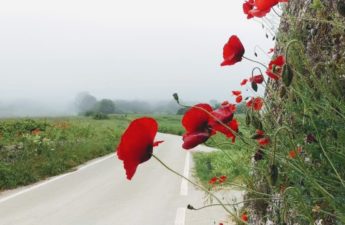
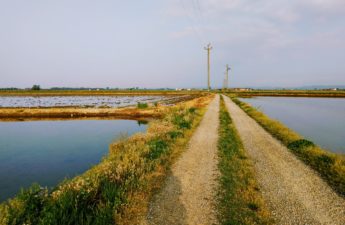
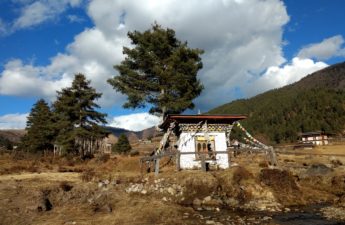
In Rome I wanted to find (not do) the Bocca della verita. So I took a walk, and a bus, and another walk. I found a little temple, I took pictures there. I found a fountain that I splashed my hands in (because I was hot), and eventually managed to find myself standing at the foot of the Circus Maximus as school children were racing around it. All because I went looking for for something (not doing). I did find the Bocca della verita. I teased some other tourists who were kind enough to take my picture putting my hand in the mouth. I pulled a Gregory Peck and pretended my hand was being eaten, and they quickly jumped to my assistance.
Seeing, eating, walking, traveling, finding has let me stand in front of great works of art, inches away (The Birth of Venus), while everyone else was getting a picture of themselves pretending to hold up a leaning bell tower.
I don’t “do”, but I have been. And I have treasures.
I love those moments where you start off doing one thing, wind up doing something completely different, but then eventually get to the place you were originally heading. I think that’s my problem with the word “doing” a place. It implies that there is a finite, narrowly-defined thing (or set of things) that mean a person has experienced a place and that when one is finished “doing” these things, there isn’t anything left to do. I like the spontaneity of just being.
I especially love Ponte Fabricio, Bridge of four heads! I have mostly been on tours or with your Dad or you, so my roaming has been limited. But my best memories have been the unplanned events that just “happen.” Like the time in Milan when you and I walked on the roof of the Duomo through the snow—awesome! Or the time on my Israel trip when four of us went to the Ethiopian Festival of Lights in the courtyard of the Church of the Holy Sepulchre on the Saturday before Easter we couldn’t get to the only exit to leave when it got late. I thought we would be either set on fire amidst all the candles, flames, and torches, or be crushed to death! It was the scariest time of my life, but my most vivid and exciting memory—and best!—of the entire trip! When I go to Seville in September I will have lots of opportunities to explore on my own.
Oh, you’re a roamer at heart, Mumsie. I just know it! And your bravery for spending several weeks alone in Seville this autumn is an inspiration (maybe I’ll have you write a piece or two for La Wandereuse — one as you’re getting ready, one while you’re there, one after you return?)
I think for most travelers, our fondest memories aren’t the things we can plan; they’re usually the moments we discover along the way. Some people might be more comfortable planning a trip — or even taking a tour — but it’s still those unexpected moments that grab our hearts. I do have a handful of “attractions” that rank pretty high up in my travel memories, but for the most part my memories are full of stories of people, places, and so on. Like Hannah says, these are the treasures that make me a traveler.
Yes, please, Joanne — guest posts from you!
When I first started traveling, I assumed I would “do” places…well, THAT fell apart pretty quickly, as it became instantly clear that I’d never run out of things to do! And while the things that other people do (or say one must do) helped direct me a bit — go to this place I’ve never heard of because the ruins are meant to be amazing, that sort of thing — the distractions were always the highlights.
Then, of course, there was the time when my friend Craig and I were in New Zealand, in a funk, listening to everyone in the hostel talk about the dolphins (that’s what you did there — you did the dolphin tour thingy), and we decided to leave without doing it. (Gasp!) Craig said to me, “We don’t need to see the dolphins. It is enough to know they are there.” I’ve used that mantra a lot over the decades since! Though when there is something you really do want to do (like the Rodin Museum, which as you know was closed the first seventeen or so times I tried to go there), the inability can be frustrating. Who knows? I don’t remember now, but maybe the funk Craig and I found ourselves in had something to do with something we weren’t able to “do”?
That is a great mantra! I need to remember it.
I think the “to-do” lists can be a great springboard into travel, but it’s important to think of whether or not YOU really want to do the “do” or whether or not you’re doing it because it’s on a list. Also, I think it’s even more important to realize that the “to-do” lists are just the beginning (and not the only). I think that’s why these two stories stick in my brain — a man who thinks he’s finished with Rome because he saw a handful of sights and a woman who thinks that there’s nothing worth seeing in Paris because something on her “to-do” list wasn’t open.
This is definitely one of the main travel “style” differences I’ve noticed. Time is a factor, and so is money, but they’re not the main things. It’s the whole approach. So many people talk about “once-in-a-lifetime” trips, but to me very few really are. Rome or wherever will almost certainly still be there in a few years. I feel like I could always go back some day, even if I never do. It feels possible, so I don’t despair. And if I do go back, I’ll be different, and so will Rome, so it’s not a repeat really at all. Every trip is different.
Don’t get me wrong – if there was something I really been looking forward to that falls through, I WILL be disappointed. For example, if the Mardis Gras Indians don’t have their processions this Sunday I will drown my sorrows in Sazeracs and crawfish and jazz. Cuz there will be some sorrow. But it’s not like I’ll stay inside and sulk. Not even close! I’ll still wander about and get lost and have silly conversations with random old men and soak it all in. And maybe come back some day to try to do that particular thing again. (Which is why I’ll have to work until I drop. Money is a big factor, but travel is my “thing”. My car is old enough to drink and I don’t own a house, but I’ve seen and “done” alot of wonderful things. So far, totally worth the tradeoff.)
Yes, time and money do play in — I know that when I have a short amount of time to travel, I am way more busy than when I have a longer amount of time. But I do agree that it is a style thing. I like the idea of rejecting the notion that something is a trip of a lifetime. In my mind, every trip is a trip of a lifetime because it’s the trip that I’m taking in that moment. And, yes, there’s always a reason to return.
The disappointment is natural, though; part of the reason we go to specific places is so that we can see (dare I say “do”) specific things. But I’ve learned — am learning — to let go of the expectation that a place can be defined by any one thing. I might be disappointed if something I really want to see is closed or cancelled or whatever. But it’s best to get over it and find something else. There’s always something else.